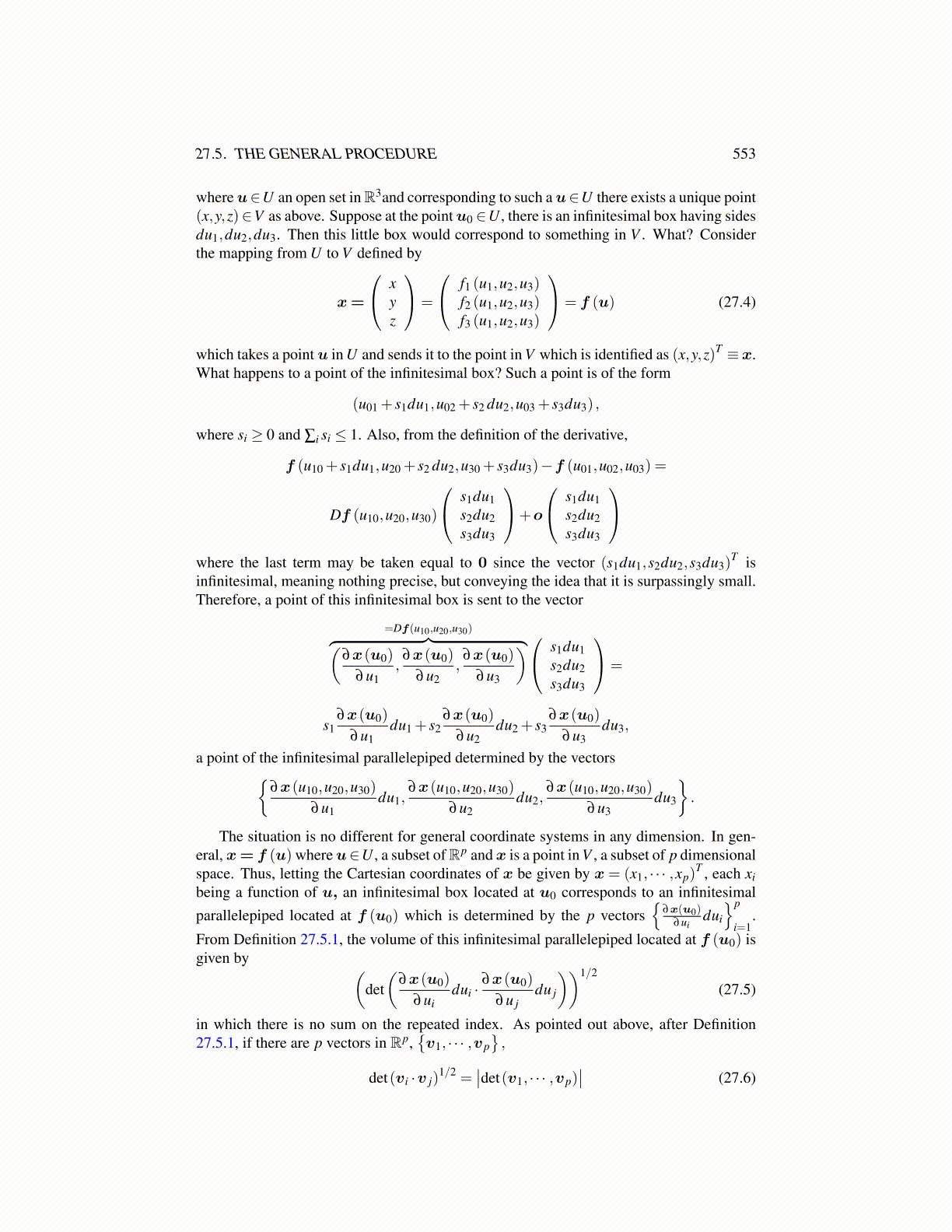
27.8. EXERCISES 553
Example 27.7.2 Let a solid occupy the three dimensional region R and suppose the densityis ρ . What is the moment of inertia of this solid about the z axis? What is the center ofmass?
Here the little masses would be of the form ρ (x)dV where x is a point of R. Therefore,the contribution of this mass to the moment of inertia would be
(x2 + y2
)ρ (x)dV where
the Cartesian coordinates of the point x are (x,y,z). Then summing these up as an integral,yields the following for the moment of inertia.∫
R
(x2 + y2)
ρ (x) dV. (27.7)
To find the center of mass, sum up rρ dV for the points in R and divide by the totalmass. In Cartesian coordinates, where r = (x,y,z), this means to sum up vectors of theform (xρ dV,yρ dV,zρ dV ) and divide by the total mass. Thus the Cartesian coordinates ofthe center of mass are(∫
R xρ dV∫R ρ dV
,
∫R yρ dV∫R ρ dV
,
∫R zρ dV∫R ρ dV
)≡∫
R rρ dV∫R ρ dV
.
Here is a specific example.
Example 27.7.3 Find the moment of inertia about the z axis and center of mass of the solidwhich occupies the region R defined by 9−
(x2 + y2
)≥ z ≥ 0 if the density is ρ (x,y,z) =√
x2 + y2.
This moment of inertia is∫
R(x2 + y2
)√x2 + y2 dV and the easiest way to find this
integral is to use cylindrical coordinates. Thus the answer is∫ 2π
0
∫ 3
0
∫ 9−r2
0r3r dzdr dθ =
874835
π.
To find the center of mass, note the x and y coordinates of the center of mass,∫R xρ dV∫R ρ dV
,
∫R yρ dV∫R ρ dV
both equal zero because the above shape is symmetric about the z axis and ρ is also sym-metric in its values. Thus xρ dV will cancel with −xρ dV and a similar conclusion willhold for the y coordinate. It only remains to find the z coordinate of the center of mass, z.In polar coordinates, ρ = r and so,
z =∫
R zρ dV∫R ρ dV
=
∫ 2π
0∫ 3
0∫ 9−r2
0 zr2 dzdr dθ∫ 2π
0∫ 3
0∫ 9−r2
0 r2 dzdr dθ
=187.
Thus the center of mass will be(0,0, 18
7
).
27.8 Exercises1. Let R denote the finite region bounded by z = 4− x2 − y2 and the xy plane. Find zc,
the z coordinate of the center of mass if the density σ is a constant.